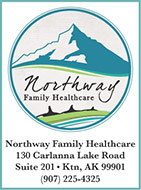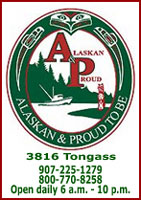|
Fish Factor Bycatch to food banks not over the railsBy LAINE WELCH
July 16, 2016
Today, only 10 percent of the fish going to hunger relief programs is bycatch of primarily halibut and salmon taken accidentally in other fisheries. The remainder is “first-run” products donated to Sea Share, the nation’s only non-profit that donates fish through a tight network of fishermen, processors, packagers and transporters. Sea Share began in 1993 when Bering Sea fishermen pushed to be allowed to direct fish taken as bycatch to food banks instead of over the rails, as required by law. “Back then that was the only thing that we were set up to do, and we are the only entity authorized to retain such fish. It became a rallying point for a lot of stakeholders, and from that beginning we’ve expanded to the Gulf of Alaska, and grown to 28 states and over 200 million fish meals a year,” said Jim Harmon, Sea Share director. Some seafood companies commit a portion of their sales, or donate products or overages. Vessels of the At-sea Processors Association have donated 250,000 pounds of whitefish blocks each year for 15 years, which are turned into breaded portions. Sea Share’s roster also has grown to include tilapia, shrimp, cod and tuna and other canned and frozen seafood products. Over the years, Sea Share has ramped up donations in Alaska where halibut portions from Kodiak fisheries are used locally, at Kenai and flown to Nome and Kotzebue, courtesy of the U.S. Coast Guard. A new freezer container has been stationed at the Port of Dillingham holding 8,500 pounds of fish and several more are being added to hubs in Western Alaska, Harmon said. “I think we’ll probably do 250,000 pounds in the state this year,” he added. A donation last week by Walmart will bring more seafood to hungry mouths in Washington. Sea Share was one of seven recipients to share grants from the corporation totaling $400,000 for community programs. “We’re trying to reach out beyond the seafood industry to larger foundations as well as the public at large,” Harmon said. He pointed out that giving fish to the needy also broadens a customer base to people who wouldn’t otherwise get it. “Food bank recipients aren’t the chronically homeless or unemployed, it’s the under employed, those between jobs who might access the bank for a few weeks,” Harmon said. “And if we give those people a great experience with seafood, when they are back on their feet again or they get that next job, they’ll start buying more seafood. It really is a win win.” Nice nets! A simple onboard net washing system is one of the latest quality boosting tools to come out of Cordova. “There’s nothing that catches fish better than a brand new net. If you can maintain a clean net, you’re fully optimizing your ability to catch,” said Bill Webber of Webber Marine and Manufacturing in Cordova. For over 40 years, he has specialized in gear for primarily salmon gillnetters; the net washer is one of the newest tools to come out of his shop. “It has vertical water chambers that weld onto the outboard sides of the rollers,” he explained. “The rollers still function as intended as the net goes through them. On the front and the back of a level line there’s vertical water jet holes that spray through the net as it goes through the lines.” Webber, who is fishing his 49th season at the Copper River, said he is fine tuning the net washer out on the water now and hopes to make them available this winter. Other Webber inventions include hydraulic rotating turrets for net reels, automated sea water chlorination systems and an electronic intravenous pressure process that bleeds a fish in about 30 seconds. “I like building a better mouse trap, if you will,” he said. All of his inventions are designed to optimize salmon quality and were born out of necessity when Webber revamped his business model 20 years ago from fisherman to “Harvester-Direct.” He was one of the first to vertically integrate his operation by becoming both a catcher and a processor onboard his gillnetter, and directing each salmon into the hands of high end chefs and buyers. Today, Webber sells more than 95 percent of his salmon catch privately under his Gulkana Seafoods brand. “Being the first owner in the supply chain, I control every aspect of my product’s existence,” Webber said. “I have developed specialized tools and very stringent handling standards and processing techniques that allow my harvest to be as Mother Nature intended. So many Americans have lost the connection to their food sources and I am their personal Alaska fisherman.” Webber makes presentations around the nation advising fishermen on how they can reclaim more value for their catches. His hope, he said, is to offer the tools that “from the get go will have them providing the finest fish to source conscious buyers.” Read fish labels Global fish consumption has hit a record high, topping 44 pounds per capita for the first time. It is the result of improved and expanding aquaculture and reduced waste, according to the U.N.’s latest World's Fisheries and Aquaculture report. Another first - people are now consuming more farmed fish than wild-caught fish. In 2014, a total of 580 species were farmed around the world, mostly finfish. The total number of fishing vessels in the world in 2014 was estimated at about 4.6 million, of which 75 percent hail from Asia. North America and Europe each accounted for just two percent of the world’s fishing fleets. In the U.S., all seafoods by law must be labeled as farmed or wild, and show their country of origin. If it’s farmed salmon from Chile, the biggest importer to the U.S., be advised that according to the National Service of Fisheries and Aquaculture, Chile used more than 1.2 million pounds of antibiotics last year to ward off a fish virus that has crippled the industry. To make matters worse, Intrafish reports that 50 Chilean salmon companies refused to disclose the amount and type of antibiotics they used, saying “such disclosure would threaten their business competitiveness.” By comparison, Norway, the world’s biggest producer of farmed salmon, uses roughly 2,100 pounds of antibiotics, primarily for sea lice problems. Bloomberg reports that Norway’s largest grower – Marine Harvest - wants to start farming salmon inside huge cargo ships rather than at sea to further reduce antibiotic use. A survey last year by global market researcher Mintel found that three-quarters of U.S. consumers prefer ‘free from’ foods, meaning free from antibiotics, preservatives, additives and GMOs. Of course, choosing wild fish is the safest bet. Otherwise, read those labels.
Laine Welch ©2016 Laine can be reached
at msfish[AT]alaska.com
Representations of fact and opinions in comments posted below are solely those of the individual posters and do not represent the opinions of Sitnews.
SitNews ©2016 Stories In The News Ketchikan, Alaska
|
|||





